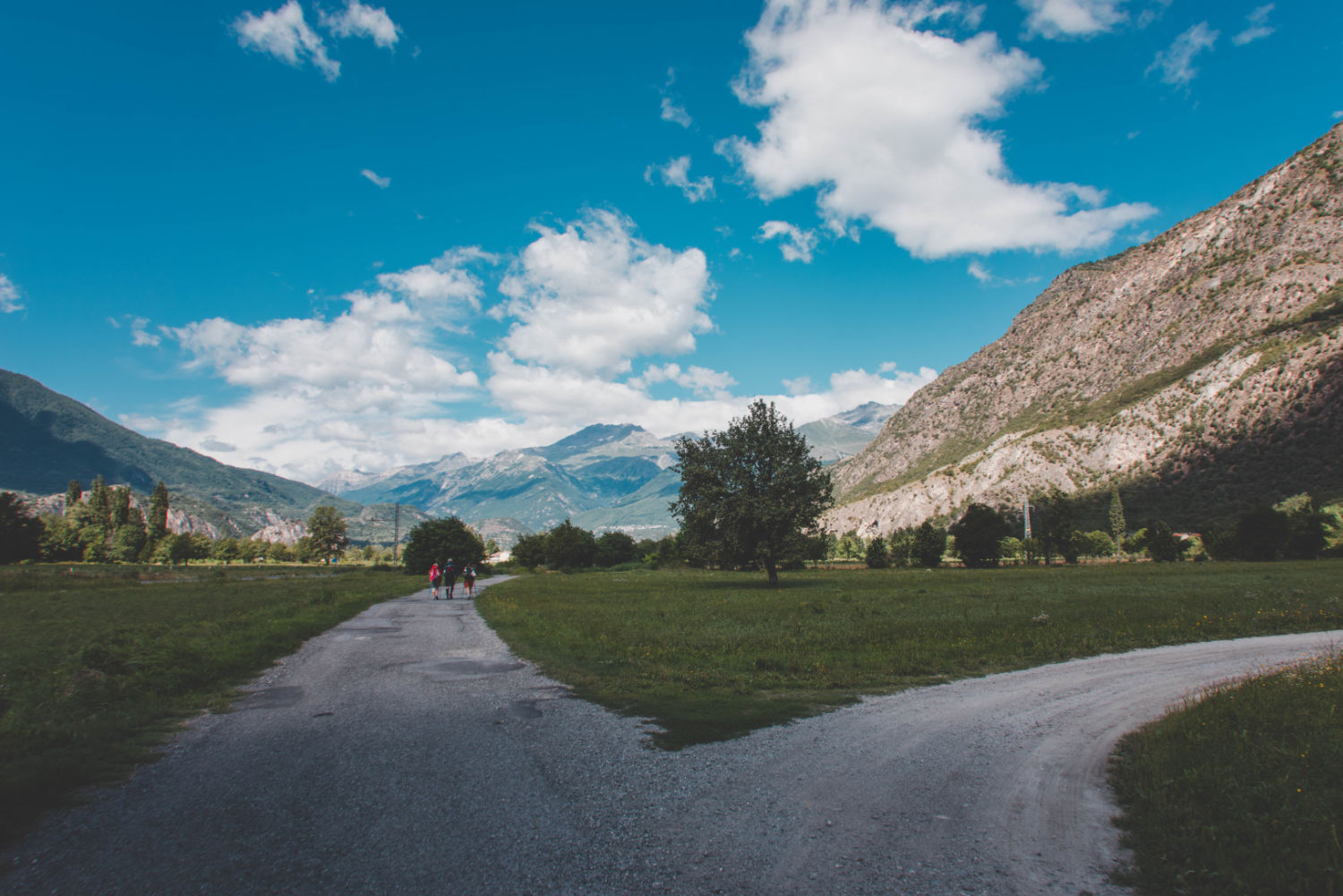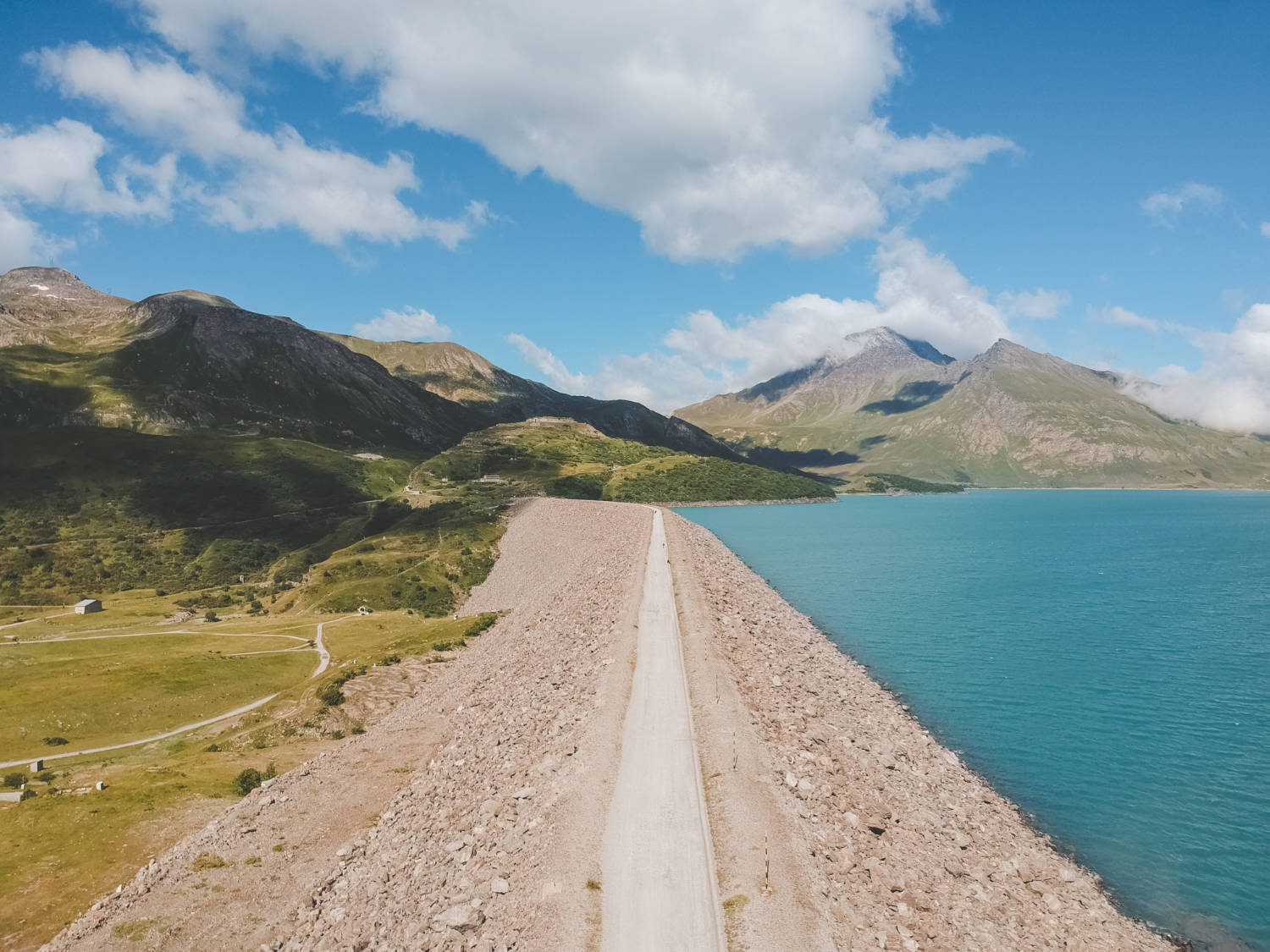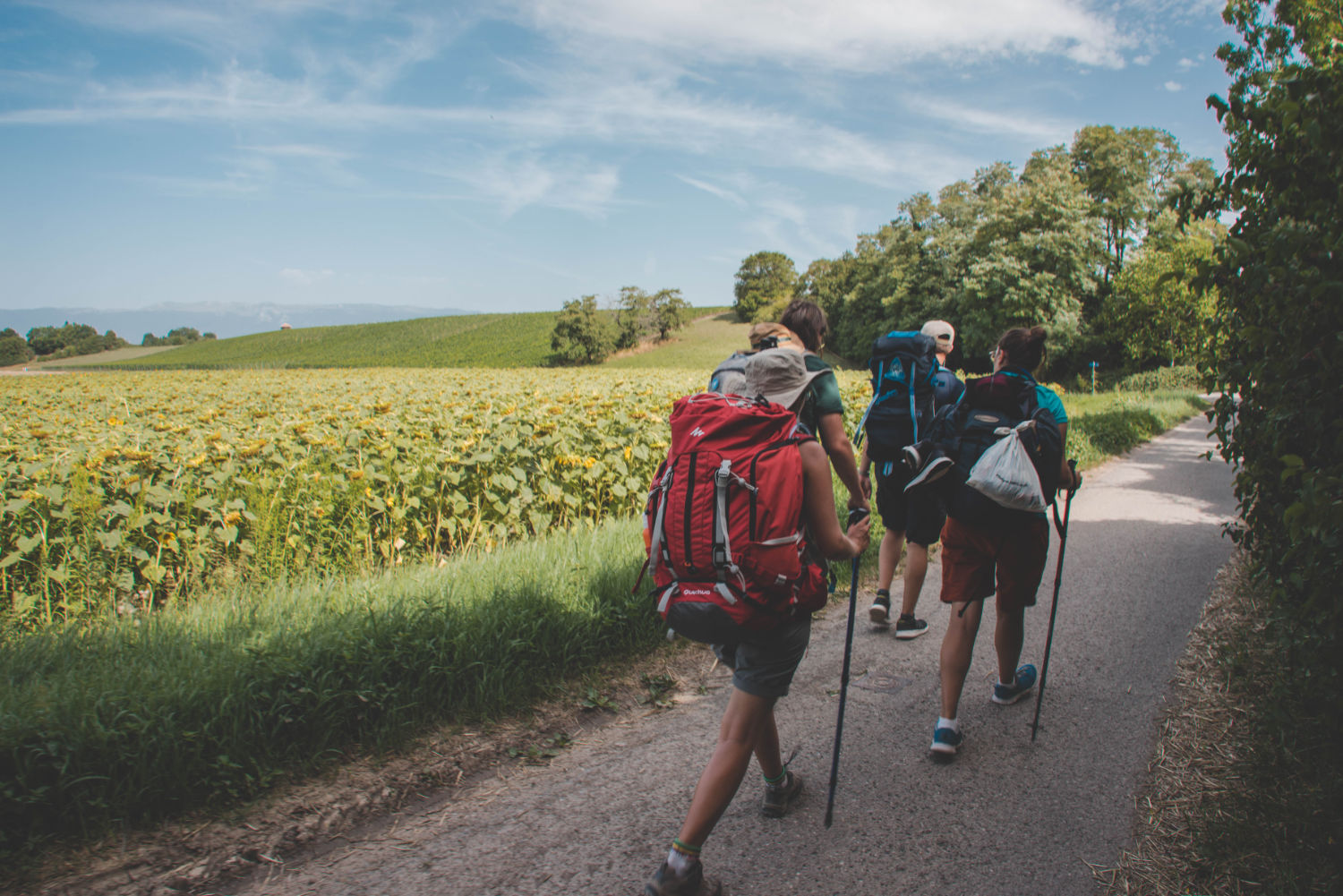THE EXILE ROUTE
Information
Altitude difference: ↑ 4740m ↓ 4770m
Duration: 14 days
GPS track
The Waldensian Exile Route, which is 340 km long (115 in Italy, 215 in France, 10 in Switzerland), follows the route taken by one of the thirteen columns of about 3,000 Waldensians exiled from Piedmont in 1687, who were held in Piedmontese prisons and then forced to march to Geneva. The itinerary starts from Saluzzo in Italy , one of the places where the Waldensians were imprisoned, and crosses the Piedmontese plain on roads and cycle paths, arriving in Avigliana. Going up the old Royal Road in the Susa Valley, it reaches the Moncenisio Pass. From here, across the Maurienne, you arrive at Annecy and then Geneva.
At the moment, the route, which is all on roads that can be covered on foot or by bicycle, is alternately equipped with signs. A guidebook and roadbook (only for the Italian part of the itinerary) have been published to provide information and advice, as well as maps to make the journey easier.
This stage runs entirely along the plains. On foot the main difficulty may be the distance.
It starts from the Castiglia prison, in the upper part of the historic centre of Saluzzo. The route crosses the pretty town and leads out into the open countryside on quiet tarmac roads with little traffic. After 20 km of flat road, passing through the small hamlets of Cervignasco and Brasse and a nice stretch of dirt road in the Po Cuneese Park, you reach Villafranca Piemonte, a town that is well worth a visit. From Villafranca Piemonte the route continues along the lovely cycle path that follows the former Saluzzo-Airasca railway line, which was decommissioned in 1986. A 7 km ride through open countryside leads to the historic centre of Vigone.
From Vigone, continue as far as Airasca on the pretty cycle path built along the Saluzzo-Airasca railway line decommissioned in 1986. The path, which is asphalted in some places and surfaced with crushed stone in others, passes by the villages of Cercenasco and Scalenghe. At Airasca the route continues to Piossasco along a quiet country road with little traffic, as access by car is reserved for residents. The country road, from which you can enjoy a beautiful view of the Cottian Alps, passes through the places where the battle of Marsaglia (4th October, 1693) was fought.
Starting from the historical centre of Avigliana, the route continues towards an industrial area to reach the town of Sant’Ambrogio di Torino, at the foot of the splendid Sacra di San Michele which dominates the landscape from the top of Mount Pirchiriano (962 m). Continue past Chiusa San Michele; Vaie; Sant’Antonino di Susa; Borgone di Susa; San Didero; Bruzolo and the hamlet of Crotte until you reach Bussoleno.
For this entire stage, follow the signs for the “Via Francigena” and “Ciclostrada Valle Susa” routes, which are always well signposted.
From Susa follow the signs for Venaus and Novalesa. A gentle climb takes you to Venaus and on the SP 210 road to Novalesa.
For this stage too, follow the signs for the “Via Francigena” and the “Ciclostrada Valle Susa”.
Leave Novalesa following the signs for Moncenisio. During the ascent, for the first few kilometere, it’s possible to cut across the hairpin bends by following the indicated path. Climb steeply for 8 km until you reach the municipality of Moncenisio. From there, continue along the mule track that climbs towards the Col, starting uphill from the village. On reaching the asphalt road, pass the Plaine Saint Nicolas and the hairpin bends of the Grande Scala and arrive at the largely ruined village of Grand Croix, which lies at the foot of the majestic Moncenisio dam. Continue the ascent to the Col passing by the large reservoir and then descend Lansleburg-Mont-Cenis along the steep Chemin de la Ramasse.
Note: hikers on foot have the possibility to split this stage and spend the night on the pass.
Leave the centre of Lanslebourg-Mont-Cenis and head towards the Chemin de Petit Bonheur. This signposted route leads mostly along dirt roads to Modane. Pass the villages of Termignon-la-Vanoise, Sollières-l’Envers, Le Châtel and Le Verney and you finally arrive in Bramans. After passing this typical mountain village, you will skirt the fortress of L’Esseillon, which was built between 1817 and 1834. A few kilometres after crossing a bridge, you reach the La Norma ski resort from which you will descend rapidly towards Modane.
For walkers, this stage can be covered using the train: from Modane where there are frequent services and it doesn’t take long to reach the centre of Sain-Jean-De-Maurienne.
The route follows the cycle path of Tour 15 of the “Mauriennaise”. Leave Saint-Jean-De-Maurienne, cross the river Arc to reach the small village of Pontamafrey-Montpascal, cross it and continue past the small villages of Saint-Étienne-de-Cuines; Saint-Rémy-de-Maurienne; Saint-Léger and then the hamlets of Marcantoux and Le Château-La Roche. Crossing the Arc again, you reach Randens and then Aiguebelle.
From Tournon follow the signs for Le Granges, Les Morets and Les Barrochins. When you reach the small hamlet of Le Bergers, turn right to reach Plancherine. Pass the small village of Les Piffets again and reach Col du Tamié (910 m). At the abbey of Notre-Dame de Tamié continue past the hamlets of Les Caillets, Neuvillard and Les Tissots to Seythenex. From here, descend rapidly towards Faverges.
You leave Annecy following the cycle path on Avenue de Brogny, and pass the Fier stream on the Pont de Brogny. Then go on to Metz-Tessy. After passing Metz-Tessy, the path crosses the village of Promery and reaches Allonzier-la-Caille. From here, follow the path taken by the Waldensian prisoners and descend towards the watercourse that flows at the bottom of the deep gorge of Les Usses, where the only bridge used to be. Walk uphill again and pass through the hamlet of Bougy to reach Cruseilles.
Leave Cruseilles and walk uphill to the small village of Saint-Blaise. From the village cemetery you will find the indications for the GR 65 trail, which should be taken in the direction of Pomier. After passing Chartreuse de Pomier, you will pass through the small villages of Jusy, Beaumont, Verrières, Moisin, La Forge and Neydens. 2 kilometres from Naydens, cross the motorway and head towards Lathoy. A little further on, you will pass the bar that marks the passage into Swiss territory. From here, follow the signs for Carouge. Once in Place du Rondeau you will quickly reach the centre of Geneva. Of course we recommend that you visit the city – but maybe the following day after a rest – taking in sights such as the Reformers’ Wall, the Cathedral, the lakeside promenade and the Museum of the Reformation, among others.





































































